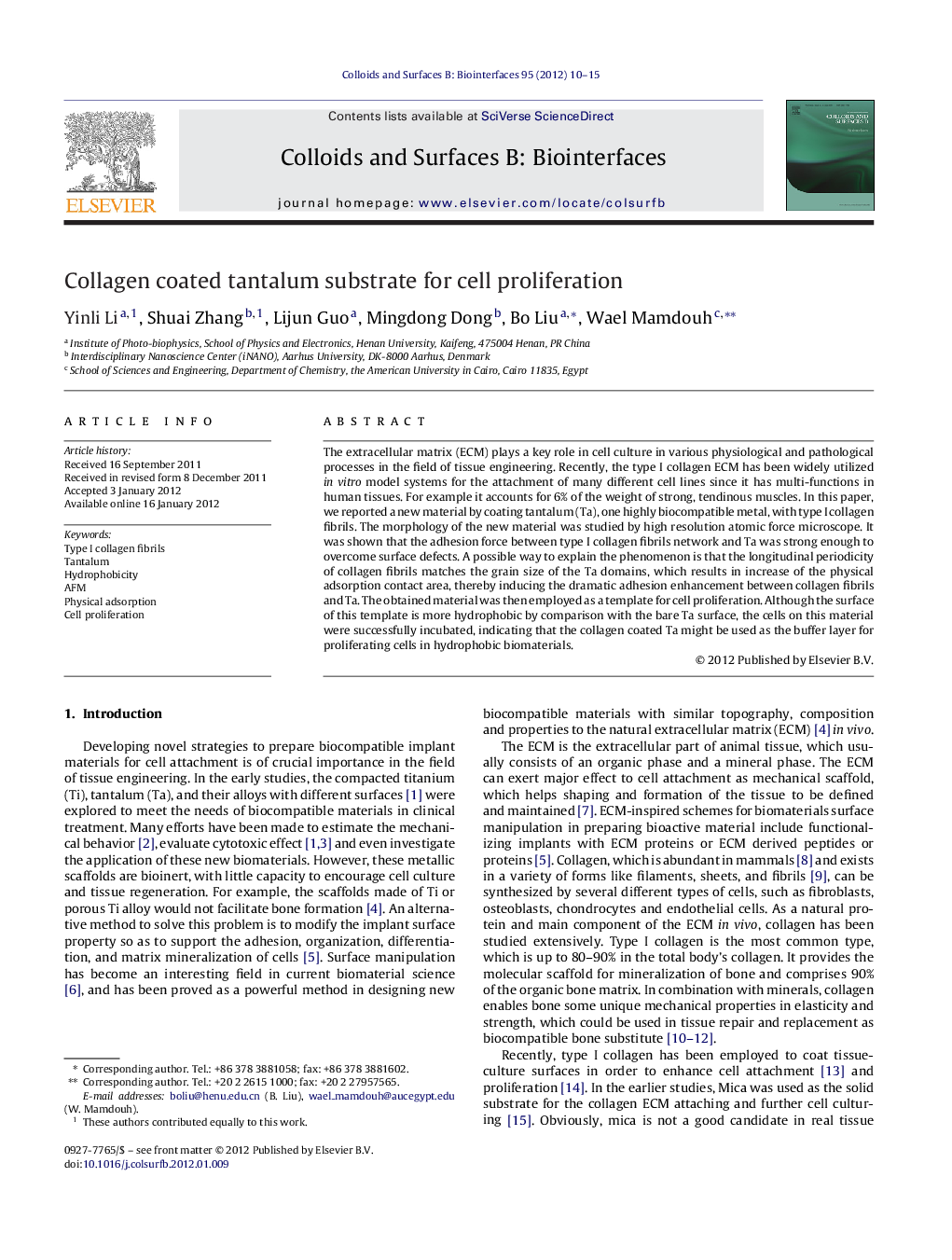| Article ID | Journal | Published Year | Pages | File Type |
|---|---|---|---|---|
| 600740 | Colloids and Surfaces B: Biointerfaces | 2012 | 6 Pages |
The extracellular matrix (ECM) plays a key role in cell culture in various physiological and pathological processes in the field of tissue engineering. Recently, the type I collagen ECM has been widely utilized in vitro model systems for the attachment of many different cell lines since it has multi-functions in human tissues. For example it accounts for 6% of the weight of strong, tendinous muscles. In this paper, we reported a new material by coating tantalum (Ta), one highly biocompatible metal, with type I collagen fibrils. The morphology of the new material was studied by high resolution atomic force microscope. It was shown that the adhesion force between type I collagen fibrils network and Ta was strong enough to overcome surface defects. A possible way to explain the phenomenon is that the longitudinal periodicity of collagen fibrils matches the grain size of the Ta domains, which results in increase of the physical adsorption contact area, thereby inducing the dramatic adhesion enhancement between collagen fibrils and Ta. The obtained material was then employed as a template for cell proliferation. Although the surface of this template is more hydrophobic by comparison with the bare Ta surface, the cells on this material were successfully incubated, indicating that the collagen coated Ta might be used as the buffer layer for proliferating cells in hydrophobic biomaterials.
Graphical abstractFigure optionsDownload full-size imageDownload as PowerPoint slideHighlights► We prepare a new ECM by coating collagen on Ta surface and the new ECM becomes from hydrophilic to hydrophobic. ► We still successfully culture cells on the new ECM even though it is hydrophobic. ► The physical adhesion force between collagen and Ta is strong to overcome surface defects. ► The cultured cell is tightly bound to the ECM.
